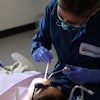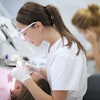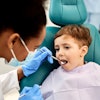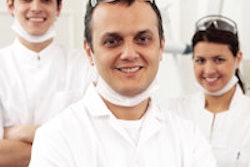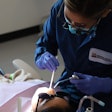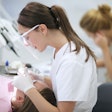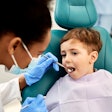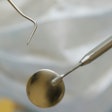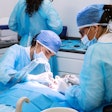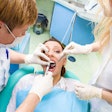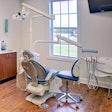
The first graduates of Minnesota's groundbreaking dental therapist program say they will focus on treating the poor, children, and the elderly, citing the overwhelming need they have seen while working in underserved and rural communities.
Two years after Minnesota became the first state to approve a law allowing midlevel dental practitioners, seven women students will complete the two-year program to be licensed dental therapists (DTs) and will receive a master's degree as oral healthcare practitioners when they graduate in June. After they have applied for and received their dental therapist license from the Minnesota Board of Dentistry, DTs will be allowed to perform basic preventive and restorative procedures and primary extractions only with the onsite supervision of a dentist.
And all the students plan to go on to the next level -- to become certified advanced dental therapists (ADT) -- after completing 2,000 hours of dental therapy clinical experience. ADTs will able to practice at facilities such as nursing homes, within the dental therapy scope of practice. They will be able to perform nonsurgical extractions of mobile permanent teeth under a dentist's general supervision with a collaborative management agreement.
In their scope of practice, ADTs will be able to do oral evaluations, assessments of dental disease and the formulation of an individualized treatment plan authorized by the collaborating dentist.
The concept has been the subject of intense controversy and debate in the dental community, especially by the ADA and state dental associations, with many denouncing midlevel dental practitioners as providing "second-class" treatment and a Band-Aid approach to the epidemic in the U.S.
Pervasive unmet need
For hygienist Jodi Hager, RDH, the pervasive unmet need that she has witnessed during her seven years working in a nonprofit clinic in rural Madelia, where she plans to stay after getting her dental therapist license, spurred her to get the additional training.
Most of the patients are on state-managed health plans and the children are in Head Start programs, she said. Most need treatment; many are urgent cases.
— Jodi Hager, RDH, dental therapist
"There's such a huge need here," Hager told DrBicuspid.com. "We have patients that drive two and half hours to get care, because there are no dentists in their area that will take new Medical Assistance [Minnesota's version of Medicaid] patients."
After several patients told her they had been looking for a dentist for several years, Hager conducted an experiment to see for herself how bad the situation was: She pretended to be a parent on Medical Assistance with a child who had a toothache and needed to see a dentist.
"I called every dentist in the nine-county region," she recalled. "Not one of them would see me. It was an eye-opener."
That experience crystallized her decision to enter the dental therapist program, which is offered at Metropolitan State University in Minneapolis.
"It solidified my resolve," Hager explained. "I realize dental therapists are not going to solve the whole problem, but it's a step for me to make a difference. I knew this was the right thing to bring more providers out to these people."
Suzanne Beatty, DDS, curriculum and clinical coordinator for the program at Metropolitan State, said the patients that the students treated in their clinical rotations came from all walks of life.
"We see many, many displaced workers; we see Iraq and Afghanistan war vets; we see frail elderly; we see children whose parents are unable to find care for them," Dr. Beatty told DrBicuspid.com.
Faculty and patients alike praised the students' work, she noted.
"We've had a great deal of positive feedback from the faculty and the patients they have served," Dr. Beatty said. "Many patients have shown extraordinary gratitude and said what a great concept this is for the provision of quality and safe dental care. Many patients have seen nurse practitioners, so to them it's a logical progression that dentistry would follow this model."
Christy Fogarty, RDH, who found out just last week that she had passed her DT exams, now works as a hygienist for a private dentist, but she too plans to work in a community clinic after graduating from the DT program.
In fact, the dental therapist law requires that graduates must work in facilities where at least 50% of the patients are on Medical Assistance.
"I've worked in rural clinics, the Twin Cities, and the suburbs, and I've seen underserved people everywhere," Fogarty told DrBicuspid.com. "There are a lot of working poor whose dental needs are going unmet."
A working mother of three children who also serves on the Farmington City Council, Fogarty found the program challenging.
"I spent a lot of days at the hockey arena with my books," she recalled. "It was just a lot of work, which it should be because it's a big responsibility."
But she loved learning new skills and doing clinical rotations at places such as the Minnesota Veterans Home.
"When you're filling front teeth or restoring a tooth that's been rotting for years, the patients just can't stop smiling when they leave," Fogarty said. "It's so rewarding."
Competency concerns unfounded
Concerns that the students would not have adequate training are unfounded, according to Dr. Beatty.
"They're educated to the competency level of dental student in their particular scope of practice," she explained. "And they're under collaborative agreements with dentists, so they will be referred or they'll seek consultation for situations where it's outside their scope of practice. So there are built-in safeguards."
Five of the seven students, already licensed hygienists, have clinic experience, Dr. Beatty added. "They are working in 'safety net' clinics," she said.
Curriculum rotations in children's dental service programs and the pediatrics department at the Hennepin County Medical Center also gave the students lots of experience with children.
"The clinic rotations provided a significant amount of experience, all with a licensed dentist who are faculty members," Dr. Beatty noted.
Timothy Flor, DDS, president of the Minnesota Dental Association, said his group worked to ensure that the legislation included requirements that students focus their services on the needy.
"The Minnesota Dental Association is committed to finding meaningful solutions to the multiple barriers to dental care facing many families in our state," he told DrBicuspid.com in an email. "That is why we worked diligently during the legislative process to ensure that the final dental therapist legislation specified the practice settings that would have the greatest impact on the underserved population."
It is too soon to assess this impact, he added, "but we will anxiously await in 2014 the evaluation report mandated by the Legislature on the effectiveness and economic impact of the new dental therapists."
Most private practice dentists who hire midlevel dental practitioners can serve more patients while maintaining or improving their financial bottom line, according to a recent report by the Pew Center on the States.
Dr. Beatty eschewed comparisons between the Minnesota program and the dental health aide therapist program in Alaska.
"The underserved are the underserved," she noted. "Does it matter whether they're in Alaska or wherever? A toothache is a toothache."
